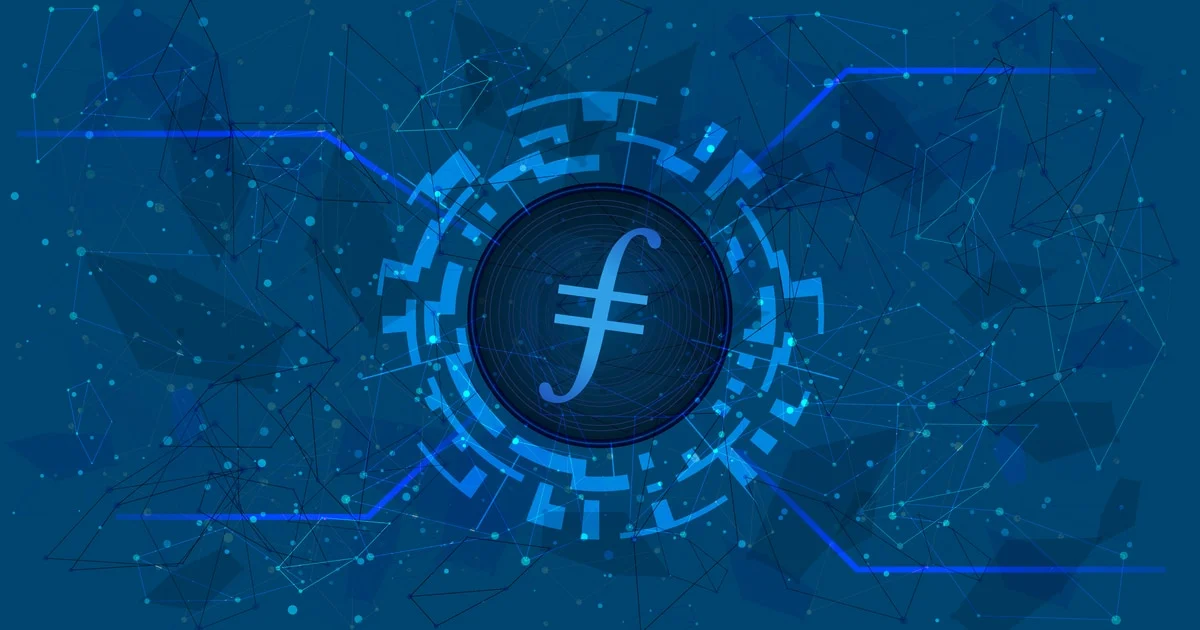-
 Bitcoin
Bitcoin $96,641.6131
2.00% -
 Ethereum
Ethereum $1,802.8240
1.77% -
 Tether USDt
Tether USDt $1.0002
0.01% -
 XRP
XRP $2.1211
-0.23% -
 BNB
BNB $599.5131
0.12% -
 Solana
Solana $145.9759
1.38% -
 USDC
USDC $1.0000
-0.01% -
 Dogecoin
Dogecoin $0.1710
2.04% -
 TRON
TRON $0.2476
1.07% -
 Cardano
Cardano $0.6612
0.98% -
 Sui
Sui $3.2634
1.16% -
 Chainlink
Chainlink $13.6133
0.78% -
 Avalanche
Avalanche $19.2134
-2.38% -
 UNUS SED LEO
UNUS SED LEO $8.6900
-0.22% -
 Stellar
Stellar $0.2587
1.37% -
 Shiba Inu
Shiba Inu $0.0...01266
1.20% -
 Toncoin
Toncoin $2.9885
-0.65% -
 Hedera
Hedera $0.1744
1.08% -
 Bitcoin Cash
Bitcoin Cash $359.2403
1.00% -
 Hyperliquid
Hyperliquid $20.9168
2.40% -
 Litecoin
Litecoin $87.4248
6.04% -
 Polkadot
Polkadot $3.8990
-0.65% -
 Dai
Dai $1.0004
0.03% -
 Monero
Monero $280.1142
-1.92% -
 Bitget Token
Bitget Token $4.2279
-1.58% -
 Ethena USDe
Ethena USDe $1.0004
0.01% -
 Pi
Pi $0.5798
0.22% -
 Pepe
Pepe $0.0...08156
4.39% -
 Bittensor
Bittensor $357.4629
-1.03% -
 OKB
OKB $50.6629
0.08%
is filecoin decentralized
Filecoin's decentralized architecture, characterized by node distribution, PoRep consensus, network incentives, and data distribution, ensures a high level of resilience, data privacy, and user sovereignty.
Nov 06, 2024 at 01:09 am

Is Filecoin Decentralized? A Comprehensive Examination
Amidst the burgeoning blockchain landscape, decentralization stands as a pivotal attribute, ensuring resilience, data privacy, and user sovereignty. As a prominent player in the realm of decentralized storage, Filecoin has garnered considerable attention. However, its level of decentralization has been a subject of discussion and scrutiny.
Defining Decentralization in Blockchain
Before delving into the intricacies of Filecoin's architecture, it is imperative to establish a clear understanding of decentralization in the blockchain context. Decentralization refers to the distribution of power and decision-making across a network of participants. Unlike centralized systems, where authority is vested in a single entity, decentralized networks rely on a distributed consensus mechanism to validate transactions and maintain network integrity.
The degree of decentralization can be assessed based on several factors:
- Network Structure: The network should comprise a large number of nodes, each with an equal opportunity to participate in consensus and network governance.
- Consensus Algorithm: The consensus algorithm should promote fairness and prevent any single entity from gaining disproportionate influence.
- Data Storage: Data should be distributed across multiple nodes, eliminating reliance on a central repository.
- Governance Model: The governance model should allow all participants to have a voice in decision-making.
Filecoin's Decentralization Architecture
Filecoin is built upon a decentralized architecture that addresses the aforementioned factors:
- Node Distribution: Filecoin boasts an extensive network of over 5,000 active nodes, each contributing to the storage and retrieval of data. The nodes are geographically dispersed, enhancing network resilience and reducing the risk of centralization.
- Proof-of-Replication (PoRep) Consensus: Filecoin utilizes a unique consensus algorithm called Proof-of-Replication (PoRep), which ensures that miners create genuine copies of stored data. By presenting cryptographic proofs, miners demonstrate their possession of data and earn rewards for providing reliable storage.
- Network Incentives: Filecoin employs a sophisticated system of incentives to encourage nodes to participate in the network. Miners receive rewards for storing data securely and providing proof of storage, while clients pay for the storage and retrieval of files.
- Data Distribution: Filecoin utilizes a content-addressable storage mechanism, where data is stored and retrieved based on its unique hash. This approach distributes data across multiple nodes, eliminating the need for a central server.
Level of Decentralization
Evaluating Filecoin's level of decentralization requires a comprehensive assessment of its architecture and network dynamics:
- Network Control: Filecoin's decision-making is governed by the Filecoin Foundation, a non-profit organization responsible for maintaining the network. However, the Foundation's control over the protocol and network operations is gradually diminishing as the community matures.
- Node Participation: The large number of nodes in the Filecoin network promotes decentralization by reducing the likelihood of any single entity dominating the network. The distribution of storage capacity across nodes further enhances resilience and data security.
- Mining Decentralization: The Filecoin mining landscape is characterized by a high degree of decentralization. While large mining pools exist, they do not possess a dominant position, ensuring that no single entity controls a significant portion of the network.
Limitations and Future Considerations
While Filecoin exhibits a substantial level of decentralization, it is not immune to potential centralization risks:
- Filecoin Plus (FIL+): Filecoin Plus (FIL+) is a centralized storage service launched by Protocol Labs, the company behind Filecoin. FIL+ offers faster storage and retrieval speeds, but it sacrifices the decentralization benefits of the Filecoin network.
- Centralized Clients: Some clients may rely on centralized services for storage or data management, introducing potential vulnerabilities and reducing overall decentralization.
- Data Integrity: Ensuring the integrity and reliability of stored data remains an ongoing challenge in decentralized storage networks, and Filecoin is no exception.
Prospects Towards Decentralization
Filecoin is poised to enhance its level of decentralization through ongoing developments and community initiatives:
- Community Governance: The Filecoin community is actively working toward establishing a decentralized governance model, allowing all stakeholders to participate in network决策.
- Incentivized Node Participation: Ongoing efforts are focused on developing new incentives to encourage more nodes to join the network, further distributing network resources and enhancing resilience.
- Privacy and Security: Filecoin researchers are exploring privacy-enhancing techniques, such as zero-knowledge proofs, to protect data stored on the network and safeguard user privacy.
Related Projects
Other notable projects in the decentralized storage space:
- Sia: Sia is a decentralized storage platform that employs a storage market mechanism.
- Storj: Storj is a cloud storage network that leverages a global network of distributed nodes.
- Arweave: Arweave is a decentralized storage protocol designed for long-term data preservation.
Disclaimer:info@kdj.com
The information provided is not trading advice. kdj.com does not assume any responsibility for any investments made based on the information provided in this article. Cryptocurrencies are highly volatile and it is highly recommended that you invest with caution after thorough research!
If you believe that the content used on this website infringes your copyright, please contact us immediately (info@kdj.com) and we will delete it promptly.
- Kaito Token Price Explodes Today Amid Key Developments
- 2025-05-08 01:35:13
- Litecoin (LTC) Price Surges 12%, Pushing Towards $96 Resistance
- 2025-05-08 01:35:13
- Avalanche (AVAX) Captures Attention as Newcomer Ruvi Prepares to Disrupt the Market
- 2025-05-08 01:30:12
- Litecoin (LTC) Price Chart Reveals a Hidden 35% Rally Signal, But There’s One Catch
- 2025-05-08 01:30:12
- Ruvi (RUVI) is Showing Strong Market Momentum, Trading at $0.01 and Attracting Attention
- 2025-05-08 01:25:12
- Strive Asset Management Transforms Into a BTC Treasury Keeper
- 2025-05-08 01:25:12
Related knowledge

What is Ethereum’s Slashing mechanism and how to punish malicious behavior?
Feb 20,2025 at 03:08am
Key PointsOverview of slashingDifferent types of slashing in EthereumIncentives and consequences of slashingIdentifying and reporting slashed validatorsOngoing discussions and potential improvementsEthereum's Slashing Mechanism: Punishing Malicious BehaviorEthereum's slashing mechanism is an essential tool for ensuring network security and punishing mal...

What is the verifier node of Ethereum and how to become a verifier?
Feb 19,2025 at 06:00pm
The Verifier Node of Ethereum: A Comprehensive GuideKey Points:What is a Verifier Node?How to Become a Verifier NodeResponsibilities and Rewards of a Verifier NodeMinimum Requirements for Becoming a Verifier NodePotential Difficulties in Running a Verifier Node1. What is a Verifier Node?A Verifier Node is an independent entity on the Ethereum network th...

What is Ethereum’s staking, and how to participate and earn money?
Feb 19,2025 at 04:37pm
Key Points:Understanding Ethereum's Staking MechanismSteps to Participate in StakingBenefits and Rewards of StakingSecurity and Risk ConsiderationsTechnical Requirements and Hardware OptionsPotential Challenges and Troubleshooting TipsFAQs on Ethereum StakingWhat is Ethereum's Staking?Proof-of-Stake (PoS) is a consensus mechanism used in blockchain netw...

What is Ethereum’s DAO (Decentralized Autonomous Organization) and how does it work?
Feb 20,2025 at 03:12am
Key PointsDefinition and Structure of a DAOGovernance and Decision-Making in DAOsBenefits and Use Cases of DAOsChallenges and Limitations of DAOsWhat is Ethereum's DAO (Decentralized Autonomous Organization) and How Does It Work?Definition and Structure of a DAOA Decentralized Autonomous Organization (DAO) is an innovative governance and management fram...

What is Ethereum's multi-signature wallet and how to improve security?
Feb 20,2025 at 02:18pm
Key Points:Understanding the Concept of a Multi-Signature WalletBenefits and Drawbacks of Multisig WalletsRequirements for Setting Up a Multisig WalletStep-by-Step Guide to Generating a Multisig WalletImplementing Strategies for Enhanced Security1. Understanding the Concept of a Multi-Signature WalletA multi-signature (multisig) wallet in the Ethereum e...

What is Ethereum's oracle and how to provide data for smart contracts?
Feb 21,2025 at 01:30am
Key Points:Understanding the concept of oracles in EthereumExploring different types of oraclesDetailed guide on how to provide data for smart contractsAddressing potential challenges and considerationsWhat is Ethereum's Oracle?Oracles are crucial components in the Ethereum ecosystem, enabling smart contracts to access real-world data and off-chain even...

What is Ethereum’s Slashing mechanism and how to punish malicious behavior?
Feb 20,2025 at 03:08am
Key PointsOverview of slashingDifferent types of slashing in EthereumIncentives and consequences of slashingIdentifying and reporting slashed validatorsOngoing discussions and potential improvementsEthereum's Slashing Mechanism: Punishing Malicious BehaviorEthereum's slashing mechanism is an essential tool for ensuring network security and punishing mal...

What is the verifier node of Ethereum and how to become a verifier?
Feb 19,2025 at 06:00pm
The Verifier Node of Ethereum: A Comprehensive GuideKey Points:What is a Verifier Node?How to Become a Verifier NodeResponsibilities and Rewards of a Verifier NodeMinimum Requirements for Becoming a Verifier NodePotential Difficulties in Running a Verifier Node1. What is a Verifier Node?A Verifier Node is an independent entity on the Ethereum network th...

What is Ethereum’s staking, and how to participate and earn money?
Feb 19,2025 at 04:37pm
Key Points:Understanding Ethereum's Staking MechanismSteps to Participate in StakingBenefits and Rewards of StakingSecurity and Risk ConsiderationsTechnical Requirements and Hardware OptionsPotential Challenges and Troubleshooting TipsFAQs on Ethereum StakingWhat is Ethereum's Staking?Proof-of-Stake (PoS) is a consensus mechanism used in blockchain netw...

What is Ethereum’s DAO (Decentralized Autonomous Organization) and how does it work?
Feb 20,2025 at 03:12am
Key PointsDefinition and Structure of a DAOGovernance and Decision-Making in DAOsBenefits and Use Cases of DAOsChallenges and Limitations of DAOsWhat is Ethereum's DAO (Decentralized Autonomous Organization) and How Does It Work?Definition and Structure of a DAOA Decentralized Autonomous Organization (DAO) is an innovative governance and management fram...

What is Ethereum's multi-signature wallet and how to improve security?
Feb 20,2025 at 02:18pm
Key Points:Understanding the Concept of a Multi-Signature WalletBenefits and Drawbacks of Multisig WalletsRequirements for Setting Up a Multisig WalletStep-by-Step Guide to Generating a Multisig WalletImplementing Strategies for Enhanced Security1. Understanding the Concept of a Multi-Signature WalletA multi-signature (multisig) wallet in the Ethereum e...

What is Ethereum's oracle and how to provide data for smart contracts?
Feb 21,2025 at 01:30am
Key Points:Understanding the concept of oracles in EthereumExploring different types of oraclesDetailed guide on how to provide data for smart contractsAddressing potential challenges and considerationsWhat is Ethereum's Oracle?Oracles are crucial components in the Ethereum ecosystem, enabling smart contracts to access real-world data and off-chain even...
See all articles





















































































